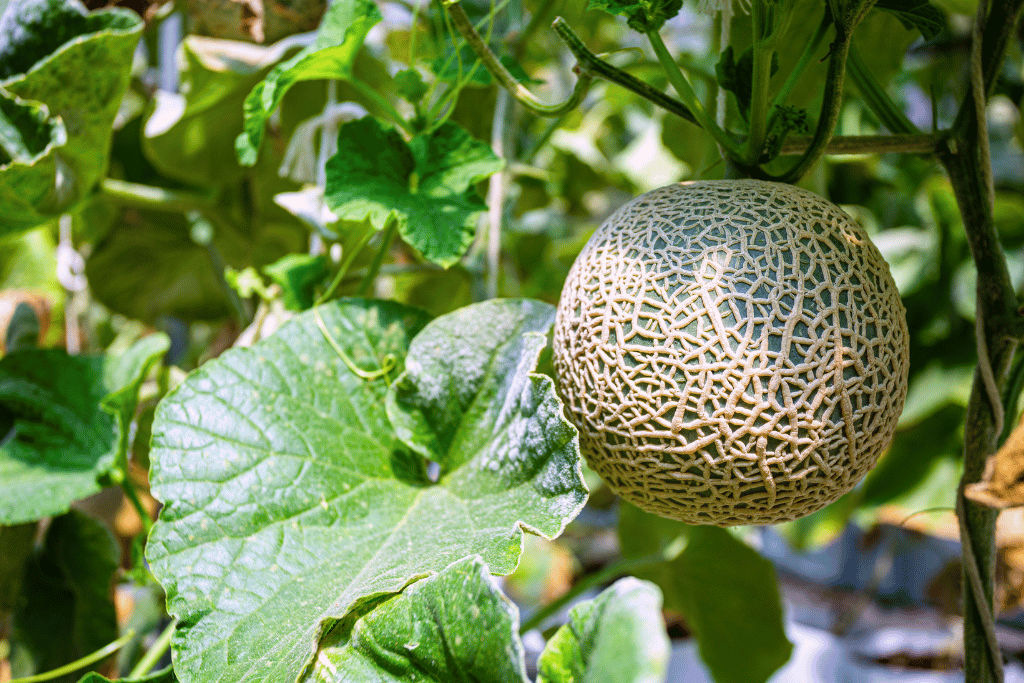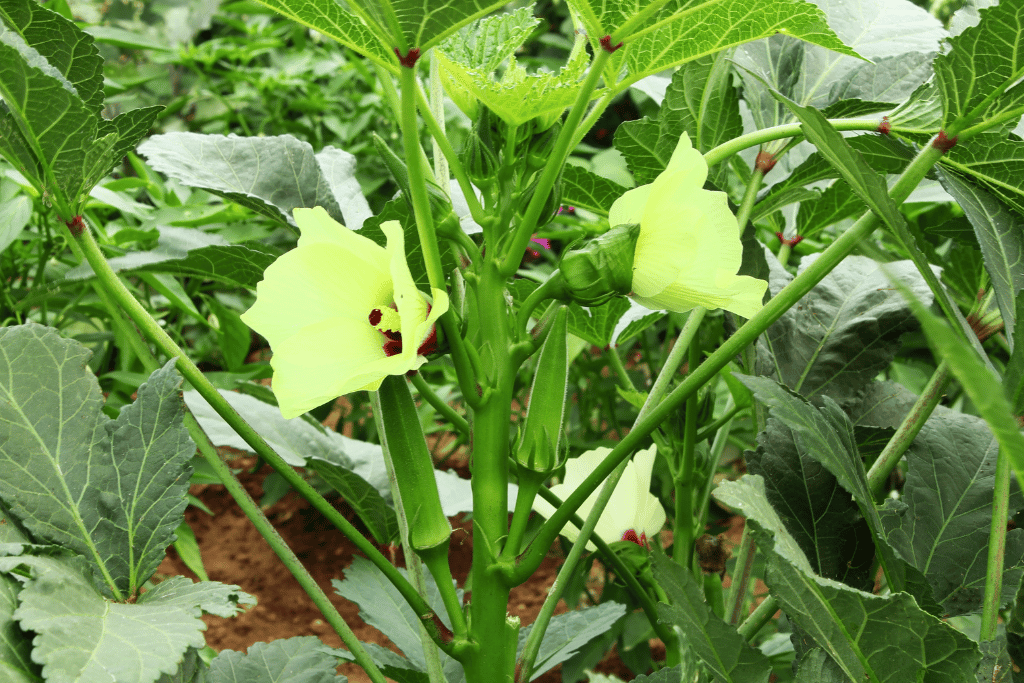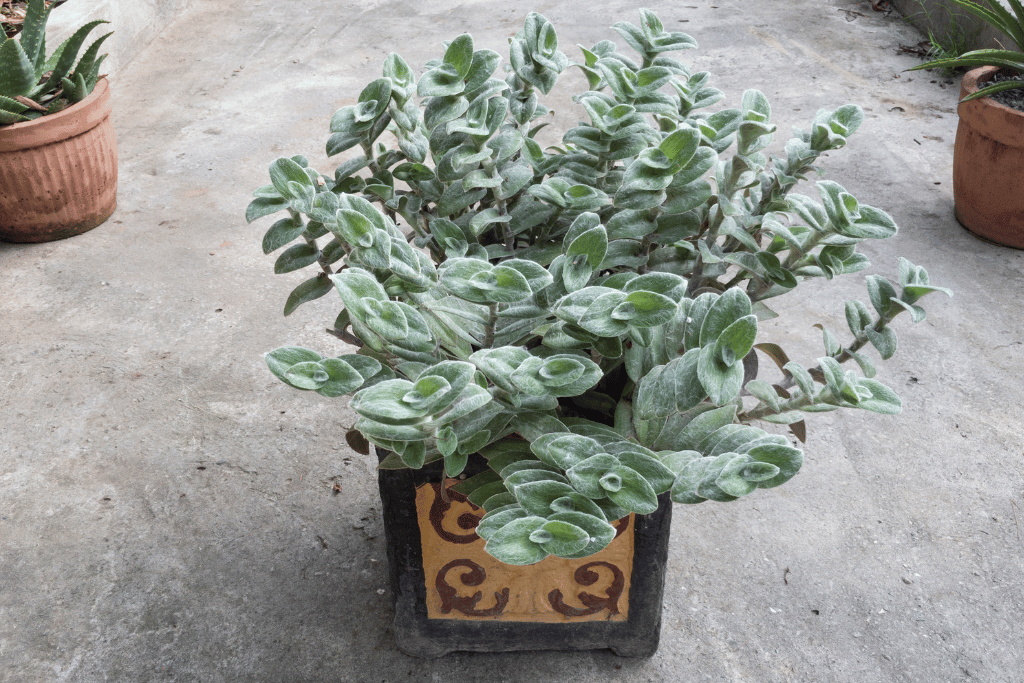
What’s better than biting into a cool, juicy sweet slice of cantaloupe on a scorching summer day?
The arrival of melons in the middle of the summer is a welcomed refreshment, to say the least.
Working in the fields under scalding and steamy conditions is always a challenge. But I’m kind of used to the heat by the time the peak of summer hits. And, there is always one bright shining spot, a midsummer milestone of sorts that I always look forward to.
Smashing melons!
Now that may sound a bit unnecessary and violent but, is in fact the best way to test a cantaloupe’s ripeness.
At least one piece of fruit must face the fate of being smashed and messily consumed right there in the garden.
If it cracks easily and is soft with a sweet, mellow flavor, chances are the rest of the melons are ready as well. Pick them soon and enjoy at the pinnacle of ripeness.
To help get your cantaloupe fruit to the stage of prime summer snacking, read about companion plants that will assist its healthy growth throughout the season.
Why Companion Plant with Cantaloupe?
Cantaloupe grow super fast, thriving in hot, sunny climates. Because of this, they are heavy feeders that require plenty of water to produce juicy fruits and keep their roots cool.
What other garden plants can we accompany our cantaloupe with?
Read on to find out the best companion plants to grow alongside your summer melon crop.
Garlic and Other Alliums
As always, allium crops come to the rescue of garden crops that are susceptible to pest invasions. The mighty smell of sulfur that garlic emits will ward off garden pests, small and large. Nothing will come nibbling on your immature cantaloupe when garlic is planted close by.
Garlic prefers the same conditions as melons; rich, well-drained soil. But because cantaloupe roots reach deep below the surface, the two won’t compete for nutrients. In fact, garlic planted among your cantaloupe will help to retain the moisture that melon roots use to stay cool and hydrated.
Read the growing guide and benefits of Companion planting onions and garlic.
Beans
Cantaloupe shoots out its vines in every direction, quickly covering the surface of its immediate surroundings. This can leave little space left for planting other crops in the area. Pole beans are the perfect solution to this problem.
Before the cantaloupe completely takes over the space, sow beans directly into the soil. As they sprout, give them tall supports to climb. Carefully train the vines to grow around the towering bean plants and take advantage of the vertical space above the bed to maximize precious garden real estate.
The growing beans will deposit plenty of nitrogen into the soil. This encourages vigorous vegetative growth from your cantaloupes, setting them up for a productive summer. Likewise, the vines and leaves will cover the ground, keeping shallow bean roots protected and cool.
Mint
Mint is a powerful herb when it comes to beating back many common pests including aphids, mites, thrips and whiteflies, all of which are known to trouble cantaloupe plants. When mint blooms, expect to see an abundance of beneficial insects and pollinators visiting the area. Cantaloupe flowers require pollination, and yields will see a big boost when mint is blossoming nearby.
Keep in mind that mint prefers some shade, plenty of water and has the tendency to run wild. Adding potted mint plants to your melon patch is a good way to reach a happy medium.
The fact these two grow so well together leads me to believe they must combine perfectly in refreshing summer cocktails or delectable fruit salads.

Lettuce
There’s a few good reasons that lettuce and cantaloupe make an effective odd couple.
Lettuce grows and matures at a fast pace, usually ready for harvest within a couple months of germination. It has time to establish, produce and be harvested well before cantaloupe vines begin to spread. During its growth, the compact bunches of lettuce will help keep weeds down and their shallow roots won’t compete with deeper melon roots.
Okra
Tall, bushy okra plants help cantaloupe in a number of ways. Thriving off the same conditions, okra will grow well above the creeping cantaloupe vines, providing a touch of shade during the peak of summer’s heat.
Like cantaloupe, okra is a heavy feeder. However the two won’t compete as they require different types of nutrients from the soil. Okra’s attractive purple and yellow flowers will draw in all types of pollinators, making your cantaloupe more fertile and abundant.

Marigolds
A steadfast companion for any garden, marigolds contribute multiple benefits to cantaloupe productivity. Their aroma helps help deter annoying pests like aphids, flies, beetles, rodents and rabbits. The vibrantly colored blossoms of marigold will also attract plenty of beneficial pollinators.
Marigolds don’t only work above ground, they protect the garden soil as well. The roots of marigolds emit a chemical that is noxious to nematodes and other soil-borne pests.
Nasturtium
Your cantaloupe will greatly appreciate having some nasturtium flowers within their proximity.
The vigorous orange flowers grow aggressively and are easy to care for in hot conditions. Nasturtium is a great trap crop for aphids but will aslo attract butterflies, bees and parasitic wasps.
Alternate rows of nasturtium or scatter them among larger plantings of cantaloupe.
Bee Balm
A wonderfully unique native plant, bee balm will attract beneficial bugs and deter harmful ones. Their tall, spiky brightly colored flowers look outstanding as a border or simply scattered throughout the garden.
Bee balm is especially effective at keeping away squash bugs, a sworn enemy of all melons and squash plants.

Melancholy in the Garden
Cantaloupe has a lot of friends in the garden, but some foes exist as well. Try to keep these few plants far away from your cantaloupe crop.
Squash
All types of squash have similar needs and growing habits as melons. This can sometimes be a good thing, but not in the case of these two types of plants.
Melons and squash both require lots of space to sprawl and produce their fruit. If planted close together, they will attract the same types of pests which can lead to a disastrous infestation. Best to keep squash and melons at opposite ends of the garden.
Potatoes
The foliage of potatoes requires a lot of space and working of the soil. Their tubers need plenty of loose, deep soil to develop properly and size up. A constantly moist soil, which cantaloupe prefers, could end up rotting the potatoes underground. Definitely use separate spaces for growing potatoes and melons.
Cucumbers
Like melons, cucumbers are vining plants that like to spread way out. The two plants will inevitably end up competing for water, sun and nutrients.
Similar pests like to feed on cucumbers and melons. In this case, it’s more effective to surround the two with different plant families that will help to drive away pests.
Trusty Cantaloupe Companions
Cantaloupe may be an aggressive grower with specific light, water and nutrient requirements, but that doesn’t mean it can’t benefit from the company of many other popular garden crops.
Try mixing and matching the fruit, flowers and veggies mentioned in this article to maximize the health and production of your cantaloupe crop.
Frequently Asked Questions (FAQ)
Is it ok to plant watermelon next to cantaloupe?
Provided they have proper spacing, watermelon and cantaloupe should grow well together. Belonging to the same plant family, they have similar growing needs and won’t cross pollinate each other.
How much space does cantaloupe need to grow?
Cantaloupe plants should be spaced 2-3 feet apart. Smaller varieties can be grown closer, especially if you plan on using a trellis.
How long until cantaloupe fruit is ripe?
It typically takes about 3 months in ideal conditions to produce a ready-to-eat cantaloupe. Remember, cantaloupe loves hot weather, so don’t start the seeds until the soil stays consistently warm.
Why doesn’t my cantaloupe taste sweet?
Too much rain or watering can cause the fruit to taste a bit, well, watered down. Pests and disease can also detract from the plant’s ability to produce sugars.
Is it possible to make cantaloupe fruit sweeter?
The best way to make sure your cantaloupes have a high sugar content is to ensure they receive lots of sun and heat. A few days before harvesting, withhold watering. The plants will be a bit stressed and produce more sugars in their fruit.



